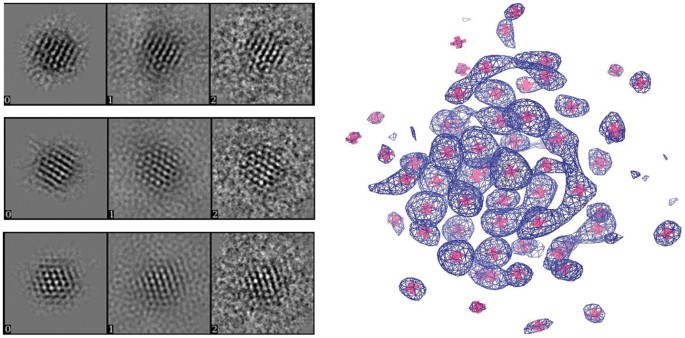
- Select a language for the TTS:
- UK English Female
- UK English Male
- US English Female
- US English Male
- Australian Female
- Australian Male
- Language selected: (auto detect) - EN
Play all audios:
Access through your institution Buy or subscribe _Science_ 345, 909–912 (2014) For many molecules, organic and inorganic alike, X-ray crystallography is arguably the most reliable way to
obtain detailed information on the positioning of atoms within the structure. However, crystallography, by definition, requires crystals, which are difficult or even impossible to obtain in
many cases. Direct imaging techniques, like transmission electron microscopy (TEM), offer the ability to 'see' individual molecules and assemblies, but rarely do they give a clear
atomic-level picture of a given structure This is a preview of subscription content, access via your institution ACCESS OPTIONS Access through your institution Subscribe to this journal
Receive 12 print issues and online access $259.00 per year only $21.58 per issue Learn more Buy this article * Purchase on SpringerLink * Instant access to full article PDF Buy now Prices
may be subject to local taxes which are calculated during checkout ADDITIONAL ACCESS OPTIONS: * Log in * Learn about institutional subscriptions * Read our FAQs * Contact customer support
Authors * Claire Hansell View author publications You can also search for this author inPubMed Google Scholar RIGHTS AND PERMISSIONS Reprints and permissions ABOUT THIS ARTICLE CITE THIS
ARTICLE Hansell, C. Gold rush. _Nature Chem_ 6, 848 (2014). https://doi.org/10.1038/nchem.2079 Download citation * Published: 22 September 2014 * Issue Date: October 2014 * DOI:
https://doi.org/10.1038/nchem.2079 SHARE THIS ARTICLE Anyone you share the following link with will be able to read this content: Get shareable link Sorry, a shareable link is not currently
available for this article. Copy to clipboard Provided by the Springer Nature SharedIt content-sharing initiative









